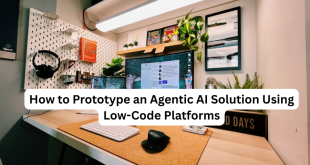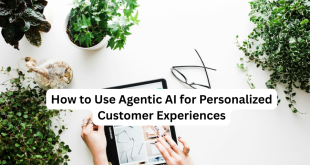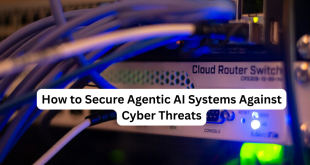The world of artificial intelligence is evolving rapidly, and Agentic AI—systems capable of autonomous decision-making and task execution—is at the forefront of this transformation. Unlike traditional AI, which relies on predefined rules or predictive models, Agentic AI acts independently, adapting to dynamic environments and driving efficiency across industries. Transitioning from traditional AI to Agentic AI can seem daunting, but with a clear roadmap, your organization can harness its potential to stay competitive. Here’s a step-by-step guide to make this shift seamless and impactful.
Step 1: Assess Your Current AI Infrastructure
Before diving into Agentic AI, evaluate your existing AI systems. Traditional AI, such as rule-based chatbots or predictive analytics tools, often operates within strict parameters. Ask yourself:
- What tasks does your current AI handle (e.g., customer support, data analysis)?
- What are the limitations of these systems (e.g., lack of adaptability, high maintenance)?
- What business goals could Agentic AI address, like automating complex workflows or real-time decision-making?
For example, a retail company using traditional AI for inventory forecasting might find it struggles with sudden demand spikes. Agentic AI could autonomously adjust stock levels based on real-time data, reducing waste and costs. Document these gaps and opportunities to align your transition with strategic objectives.
Step 2: Define Use Cases for Agentic AI
Agentic AI shines in scenarios requiring autonomy and adaptability. Identify specific use cases where it can add value. Some examples include:
- Healthcare: Autonomous AI agents managing patient scheduling or triaging based on medical data.
- Logistics: AI optimizing delivery routes in real time, accounting for traffic or weather.
- Finance: Agents detecting fraud patterns and executing mitigation strategies independently.
Engage stakeholders—IT, operations, and leadership—to prioritize use cases based on impact and feasibility. For instance, Gartner predicts that by 2028, 15% of daily work decisions will be made autonomously, so focusing on high-impact areas like customer experience or supply chain can yield quick wins.
Step 3: Upskill Your Team
Transitioning to Agentic AI requires a workforce equipped to manage and collaborate with autonomous systems. Traditional AI often demands expertise in data science or programming, but Agentic AI also requires skills in:
- AI orchestration: Designing workflows for AI agents to operate independently.
- Ethics and governance: Ensuring AI decisions align with organizational values.
- Monitoring and feedback: Analyzing agent performance and refining behaviors.
Offer training programs, such as online courses from platforms like Coursera or workshops from cloud providers like AWS or Microsoft Azure, which offer Agentic AI-focused modules. Encourage cross-functional learning to bridge gaps between technical and business teams. For example, a logistics manager might learn how to interpret AI-driven route optimization outputs.
Step 4: Choose the Right Technology Stack
Agentic AI often builds on existing AI frameworks but requires tools that support autonomy, such as:
- AI Platforms: Google Cloud AI, Microsoft Azure AI, or open-source frameworks like LangChain for building autonomous agents.
- Data Infrastructure: Real-time data pipelines (e.g., Apache Kafka) to feed AI agents with up-to-date information.
- Monitoring Tools: Solutions like Prometheus or Grafana to track agent performance and decision accuracy.
Start small with cloud-based platforms to minimize upfront costs. For instance, a small business could use Google Cloud’s Vertex AI to prototype an autonomous customer service agent. Ensure compatibility with your existing tech stack to avoid costly overhauls.
Step 5: Pilot and Iterate
Launch a pilot project to test Agentic AI in a controlled environment. Choose a low-risk, high-value use case from Step 2. For example:
- A marketing team could deploy an AI agent to autonomously adjust ad campaigns based on real-time performance metrics.
- Set clear KPIs, such as reduced response time or cost savings, to measure success.
During the pilot, monitor for challenges like unexpected agent behaviors or data integration issues. Use feedback loops to refine the system. For instance, if the ad campaign agent over-allocates budget, tweak its decision parameters. This iterative approach builds confidence and minimizes disruption.
Step 6: Address Ethical and Governance Concerns
Agentic AI’s autonomy raises ethical questions, such as accountability for decisions or potential biases. Establish a governance framework:
- Transparency: Ensure AI decisions are traceable and auditable.
- Bias Mitigation: Regularly test for biases in agent outputs, especially in sensitive areas like hiring or lending.
- Human Oversight: Maintain human-in-the-loop mechanisms for critical decisions.
For example, a healthcare provider using Agentic AI for patient triage should implement regular audits to ensure equitable treatment recommendations. Engage legal and compliance teams early to align with regulations like GDPR or HIPAA.
Step 7: Scale and Integrate
Once the pilot proves successful, scale the Agentic AI solution across the organization. Integrate it into broader workflows, such as connecting the ad campaign agent to CRM systems or the logistics agent to IoT devices. Invest in change management to ease the transition:
- Communicate benefits to employees, like reduced repetitive tasks.
- Provide ongoing training to adapt to new AI-driven processes.
- Celebrate early successes to build momentum.
For instance, a retailer scaling an inventory management agent could showcase a 20% reduction in stockouts to encourage adoption in other regions.
Step 8: Monitor and Evolve
Agentic AI isn’t a set-it-and-forget-it solution. Continuously monitor performance using metrics like decision accuracy, processing speed, and cost efficiency. Leverage analytics tools to identify areas for improvement. Stay updated on advancements—new models or frameworks emerge frequently, and adopting them can keep your organization ahead.
Why Make the Transition?
Transitioning to Agentic AI positions your organization to thrive in an era of automation and adaptability. Unlike traditional AI, which requires constant human input, Agentic AI empowers businesses to operate faster, smarter, and more efficiently. For example, companies using autonomous agents in supply chains have reported up to 30% cost reductions, according to Deloitte.
Final Thoughts
Moving from traditional AI to Agentic AI is a strategic journey, not a leap. By assessing your current systems, defining clear use cases, upskilling your team, and iterating through pilots, you can unlock the power of autonomous AI. Start small, prioritize ethics, and scale thoughtfully to transform your organization into a future-ready powerhouse.
 UBUCH ubuch | Honest Tech Reviews & Tutorials for Everyone
UBUCH ubuch | Honest Tech Reviews & Tutorials for Everyone




